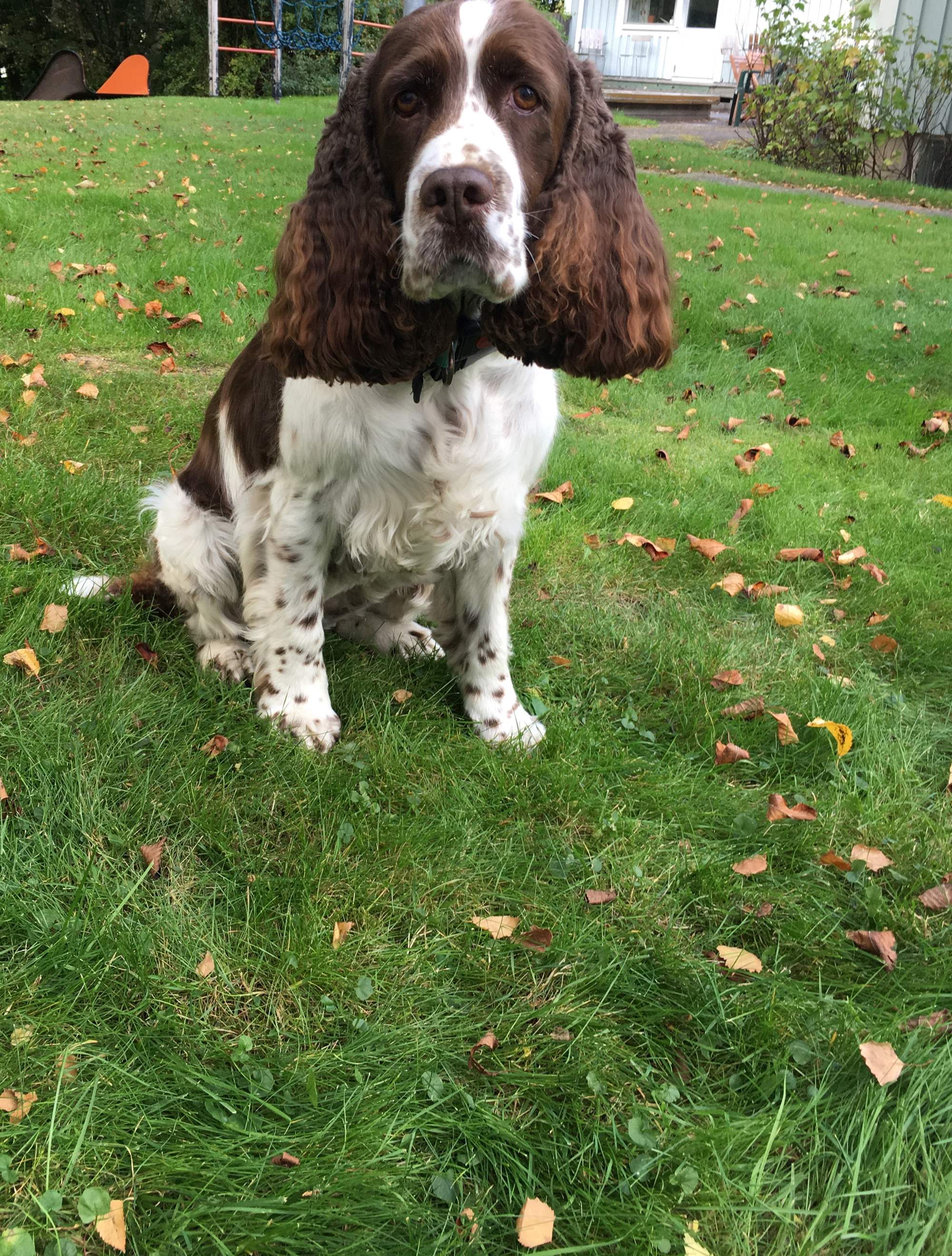
A day at work with Svea
Paw. Find the treat. High five. Svea doesn’t miss a beat. But then she’s a certified therapy dog with a license to heal. Together with her owner, Annika, she helps children and youngsters forget their worries for a while. Stroking, listening, snuggling and learning are positive experiences – sometimes providing far greater benefits than we dare hope.
We joined Svea one bright spring day at Slottis in Gothenburg, Sweden. Slottis caters for eight patients in need of inpatient psychiatric care. Today, Svea is visiting two girls who will each get to spend about half an hour with her. The first session is outdoors, jumping around and playing, with Svea hopping between the decorative rocks and park benches. Then it’s time to go indoors for the next session, with slightly calmer activities such as dog massage.
“Almost everyone who meets Svea squats down and strokes her,” says Annika Isoniemi Blom, who owns Svea and runs Svea Hundteam. “Then we just take things from there. Some are tired and just want to cuddle and pet her. Others want to be more active. It’s important to be empathetic and build mutual trust between the patient, Svea and myself.”
When you stroke a dog, it increases the amount of oxytocin in the body, a hormone that has a calming effect and provides a feeling of well-being. Zandra Stenback, section manager at Slottis, recounts stories that amaze us. About children who refused to eat for a long time who suddenly began eating. About children who lost their lust for life who suddenly began smiling and laughing out loud. About children who take medication to feel good who suddenly say they no longer need it. But what happens when the children are discharged and no longer meet Svea?
“All good experiences that I have as an individual I carry with me,” says Zandra. “When our former patients meet a dog, they associate it with something positive. There’s also a sense of pride over having learned something about dogs, having done something good.”
The day’s work is over and Svea joins Hjördis, a new colleague trained as a visiting dog. Hjördis is two-and-a-half years old and sometimes gets to work in the field. Svea will be nine this autumn and her assignments are increasing in number. More and more people are realising the healing effect animals can have on humans. It takes about a year plus practical experience to train a dog and its handler.
We leave Slottis feeling elated and with even greater conviction to continue sponsoring Svea through the Foundation for Queen Silvia Children’s Hospital.